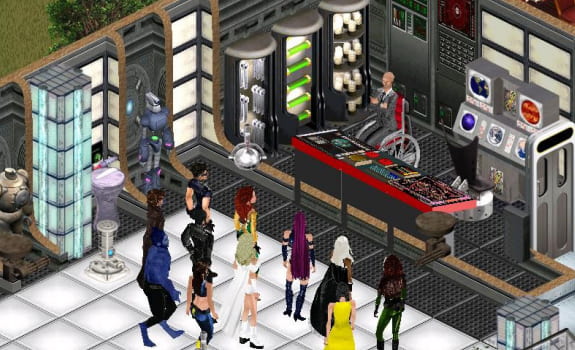Continued from Part I.
Part Two: The Drowned Man as a participatory culture.
Further to my previous discussion of The Drowned Man as a universe encapsulating its own internal logic and narrative structure, it is perhaps unsurprising that some members of the ‘audience’ choose to take that universe and give it a life of its own in the ‘real world’.
Immersion, is after all, is “the complete involvement in some activity or interest” (Miriam-Webster, 2013). Why should immersion take place only in or at the point of initial engagement? Why should it not follow us into our everyday lives (and thus extend and perhaps complete that sense of involvement into what might be called ‘total immersion’)?
For some who participate in The Drowned Man experience, the original site of immersion is not enough. They wish to extend this sense of total engagement outside of that site and create an extended sense of immersion in their everyday lives.
In fact, the more I think about it, the more I believe that that is all fans are doing – extending the sense of immersion in a particular text, narrative or cultural artefact into the ‘real world’.
I’m not sure whether followers of The Drowned Man would call themselves fans, but there are some points of intersection with what I will call fans of popular culture. Not the least of which is the object of their fannish activities, which is the performance itself. The Drowned Man remediates and appropriates the narrative and cultural language of other media that attracts fan cohesion, participation and behaviour. Its visual and textual structure harkens to other forms of entertainment, most notably film, television and the videogame, which marry images (in particular motion pictures), narrative, and sensations of immediacy. It is also related to other textual (though perhaps less immediate) forms (both analogue or digital), such as books, comics, plays, musicals, cartoons, concerts and other narrative-driven, immersive or storytelling devices. Such qualities invite an audience to immerse themselves in an alternate world or universe, or to project ourselves (or, indeed, a narrative) onto that world. In so doing it also invites us to immerse ourselves fully outside the point of initial contact. Those passionate enough about a text will seek extended immersion through the further remediation of the source text; through the perceived improvement of that text; through networking with other fans/remediators; and through the building of social/cultural/knowledge capital via such networks.
In short – cultural texts, artefacts or phenomena such as The Drowned Man (or The Matrix, Lord of the Rings, X-Men, Les Miserables, The Simpsons, Lost, One Direction, to name but a very few) invite an audience; and through remediation, the audience seeks in some way to become a performer of that text.
As Daniel Cavicchi (2008) explains:
I tend to think of it [fandom] as a degree of audiencing, a realm of marked cultural participation that is always relative to, and defined against “normal” or unmarked cultural participation […] [I]nstances of audiencing has mostly to do with the commodification of culture, which depends on a radical – and sometimes playfully manipulative – reworking of the relationships between performer and audience.
In this and the next part of the review, I’d like to focus on the ‘fannish’ activities of followers of The Drowned Man – on the building of their community, their commodification/remediation of The Drowned Man text, and the recasting of themselves as performers within that cultural text.
A small disclaimer: as a relative outsider to the community (or someone who has one foot in the proverbial door), it was left to my friend to open my eyes to its activities and behaviours – I cannot claim to accurately represent The Drowned Man fan community or any of its individual members. My thoughts are based solely on my own experiences of the genre (with a little help from my friend); and on what I have gleaned from the online fan groups available on the Web.
The Knowledge Gatekeepers
One of the great things about participatory culture is that there is no gatekeeper.
Everyone owns a little piece of knowledge that they can share if they so wish.
The Drowned Man is vast in scale – so vast, in fact, and so chock full of cultural references that it is well nigh impossible to unravel or document them all as a single individual. One stands a much better chance of comprehending the whole if one pools resources, knowledge and information. It’s the reason why sites like Wikipedia work so well. It’s because no one single person holds the keys to all the knowledge contained therein. It’s because everyone holds a key and can throw the door open onto their own insights and expertise.

The first piece of documentation all audience members are handed before going into the performance – a summary of the two main storylines. Image courtesy of Mild Concern.
There are a couple of digital Drowned Man communities that I am aware of on Facebook. One of them is a closed group (though is by no means stringent about who they let in), which is gradually aggregating information about the production. The Drowned Man Content Discussion Group is a prime example of a participatory culture, as it acts as a hub for people to exchange thoughts, ideas and knowledge on the object of their interest; it is also a place to hang out; and it also a growing archive of material related to that object of interest.
For example, looking into their Files section, you’ll find cast lists; cast galleries; maps of the set; soundtrack playlists; and so-called ‘cheat sheets’. There are also scans of documents from the set that aid in fan’s world-building activities, and shed light on the world itself.
Playlists can also be found on YouTube and Spotify, depending on your preference; and then there are tumblr blogs that share recaps of individual shows, and the thoughts and reactions of ‘audience’ members. Again, because experiences of the show are very subjective there are intersections in fan narratives of the text, but also wildly divergent documentations of those experiences. It is important to note that fans do not only put out their own views on the production; they also take the time to read and remark on other people’s observations. This can lead to the serendipitous discovery of many aspects of the show that were previously hidden. It can also lead to connections between participants who share common opinions, interests, or attachments to certain characters. As yet, however, there does not seem to be a cohesive, centralised fan community for The Drowned Man. This may be because the community is still in the nascent stage; it may also be because the fandom itself is relatively ‘niche’. The Temple Studios tumblr blog has attempted to draw together a resource of online sites about The Drowned Man, but it is difficult to say how comprehensive or current this list actually is.
Another factor which may also be affecting cohesion of the TDM fan community is the fact that sharing information about your experiences appears to be highly contentious. The Drowned Man Content Discussion Group qualifies itself by adding a “Contains SPOILERS” warning to its title, warding off those who might not want their experience of the show contaminated. Some amateur reviews of the production have been marked with the spoiler warning; or have been encouraged by other fans (whether politely or not-so-politely) to carry a spoiler warning. The visceral nature of the show, and its hyper-stylised, highly-symbolised themes, in turn invite visceral reactions to the show and its characters. Consequently, many audience members invest themselves emotionally in The Drowned Man, and thus develop a protective relationship with it. Other members may find a thrill in uncovering one of the show’s many mysteries and having ownership of that knowledge. In sharing that knowledge they are able to develop their own knowledge/social/cultural capital, and because of this many feel the need to share what may be considered spoilers in order capitalise on that knowledge and/or add to the community as a whole. This tension between the potential spoiler and the anti-spoiler fans is certainly apparent in the TDM community, and is testament to the high emotional investment of its members in the world of Temple Studios.
It is interesting, then, to compare the TDM fan community with other, spoiler-based groups such as the Survivor fans studied by Henry Jenkins in Convergence Culture (2006). With the Survivor fans, the legitimacy and veracity of those fans who apparently knew too much was always questioned. Can the information be relied on? What is the ulterior motive of the person who provided the information? Are the rumours true, or are they misinformation?
With fans of TDM, however, veracity appears always to be assumed in the quest to unravel a mystery to which there are no YES or NO answers, no right or wrong, no winner or loser. Instead the questions are – Do I want to know this piece of information? Is this going to ruin my experience? Is it simply too much information? This is similar to the conundrum faced by fans in many fandoms, although TDM fans can also add another dimension to that list of questions. Namely: Will this ruin the projected relationship I can build with a character? And will it ruin the projected relationship I can build with the story itself (bearing in mind that the story is, essentially, fluid, non-linear, discontinuous, and malleable to the imprint of audience members)?
The TDM community treads a precarious line between knowledge as potential ally in fan world-building, and as potential destroyer of the world they have already built for (and by) the production itself.
Knowledge of the text makes TDM fans owners and performers of the text – but how one chooses to perform the text may take on a wide variety of forms.
There are those who perform at the initial site of engagement, as potential actors and agents on the set.
There are those who act as information brokers and resource builders within the fan community.
Some perform the text through documenting and reliving their experience of it.
Others perform it via creative re-interpretation in a variety of different media.
Continued in Part III




